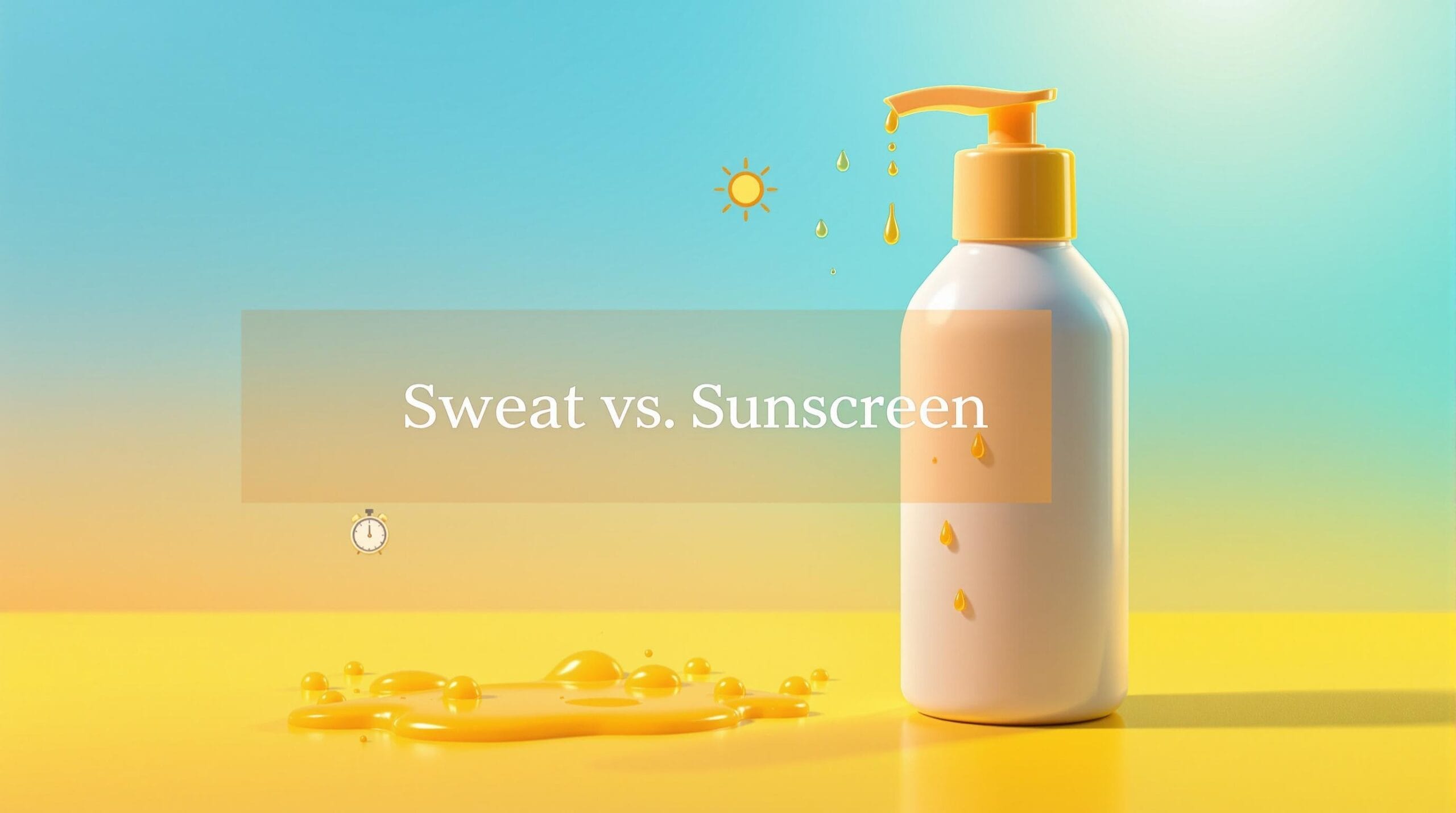
It’s a common conundrum: you apply sunscreen to protect your skin from harmful UV rays, yet find yourself sweating shortly after. This sweating can be confusing and inconvenient. Sunscreen interacts with the skin in unique ways; its formulation can sometimes trigger your body’s natural response to cool down, especially in hot weather.
Understanding the ingredients in broad spectrum sunscreens is crucial. They are designed to create a protective layer; however, some components contribute to an increase in temperature and perspiration on the skin’s surface. It’s essential to explore how this process works and why it might lead to more sweat.
What Happens to Your Skin?
Skin is a complex organ that reacts to external products in various ways. When sunscreen is applied, it forms a barrier on the skin. This barrier is crucial for UV protection but can also contribute to the skin retaining heat. Increased oil production often accompanies this process as the skin attempts to maintain its natural balance.
Additionally, environmental factors like temperature and humidity can exacerbate this effect. When it’s hot and humid, the body’s natural response is to sweat more to regulate temperature. This is why you might notice increased sweating after applying sunscreen when spending time outdoors or engaging in physical activities.
Sunscreen Ingredients: The Culprits?
Certain ingredients in sunscreens can cause or increase sweating. Chemical sunscreens, which absorb UV rays, contain ingredients that can raise skin temperature, leading to more sweat. Physical sunscreens, containing minerals like zinc oxide or titanium dioxide, sit on the skin’s surface and may feel heavier in hot climates.
Some formulations include ingredients like fragrance or alcohol, which can irritate the skin, leading to increased sweat production. Choosing a sunscreen specifically labeled as “non-comedogenic” or “sweat-resistant” can help alleviate some of these issues.
Is Your Skin Overreacting?
Sensitive skin can exaggerate responses to products, including sweating. Conditions like hyperhidrosis can lead to excessive sweating when certain products are applied. Identifying your skin type can help in choosing the right sunscreen.
It’s critical to pay attention to how your skin reacts. If you notice increased sweat, irritation, or breakouts, you might have sensitive skin. Testing new products on a small skin area before full application can help prevent discomfort.
The Role of Heat and Humidity
Heat and humidity play significant roles in how our skin reacts to sunscreen. Under these conditions, the skin’s surface becomes warmer and triggers sweating as a cooling mechanism. Applying sunscreen can increase this effect, making it more noticeable during outdoor activities.
Tips to Combat Sweat After Applying Sunscreen
- Choose lightweight formulations to minimize the heavy feeling on the skin.
- Use powders or sprays for touch-ups, especially during prolonged outdoor exposure.
- Maintain hydration and consume foods that are less likely to increase body temperature.
- Stay cool by wearing airy, breathable clothing and taking breaks in shaded areas.
Keeping the body cool and hydrated can reduce the likelihood of excessive sweating. Consider carrying a travel-size mist to refresh your face and skin throughout the day.
Alternatives: Sunscreen and Sweat-Free Solutions
For those prone to sweating, choosing the right sun protection is key. Mineral-based sunscreens or gel formulations can be beneficial, as they tend to feel lighter on the skin. Such products are less likely to cause additional sweat and provide effective UV protection.
Additionally, look for sweat-resistant sunscreens marked as “sweat-resistant” or “sports formula” for active lifestyles. Investing in high-quality products ensures your skin remains protected without the discomfort of excess sweating.
When to Seek Professional Help
If you experience severe skin reactions or notice symptoms like rashes, redness, or extreme sensitivity, consulting a dermatologist is advisable. These could be signs of an adverse reaction to sunscreen that requires expert intervention.
Conclusion: Keep Calm and Apply Sunscreen
Despite the challenges of sweating, applying sunscreen remains an essential part of sun care. By understanding your skin type and choosing the right products, you can ensure effective protection without discomfort. Experiment with different formulations and techniques to find what works best for you, and embrace self-care practices to protect and nourish your skin.







